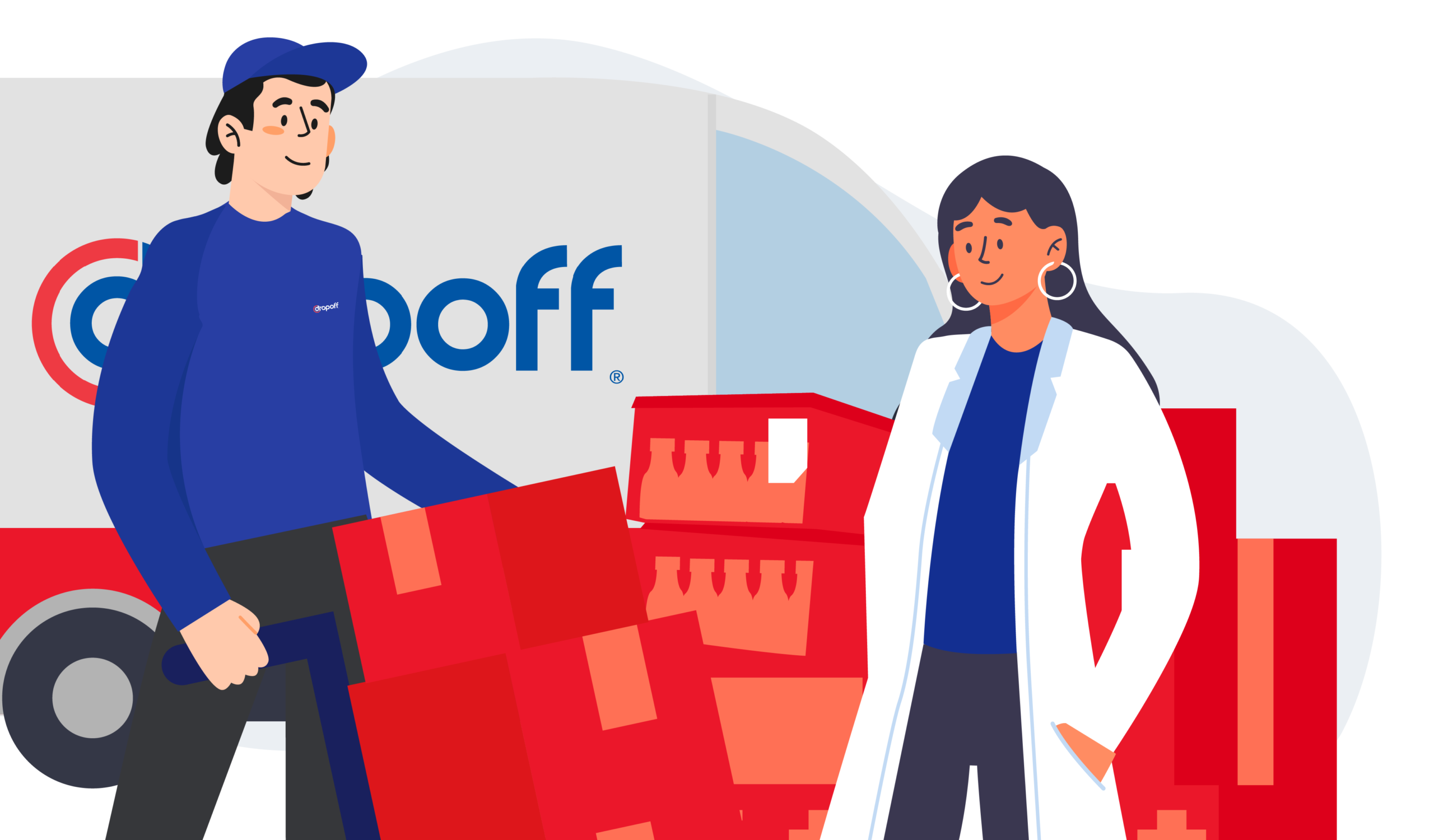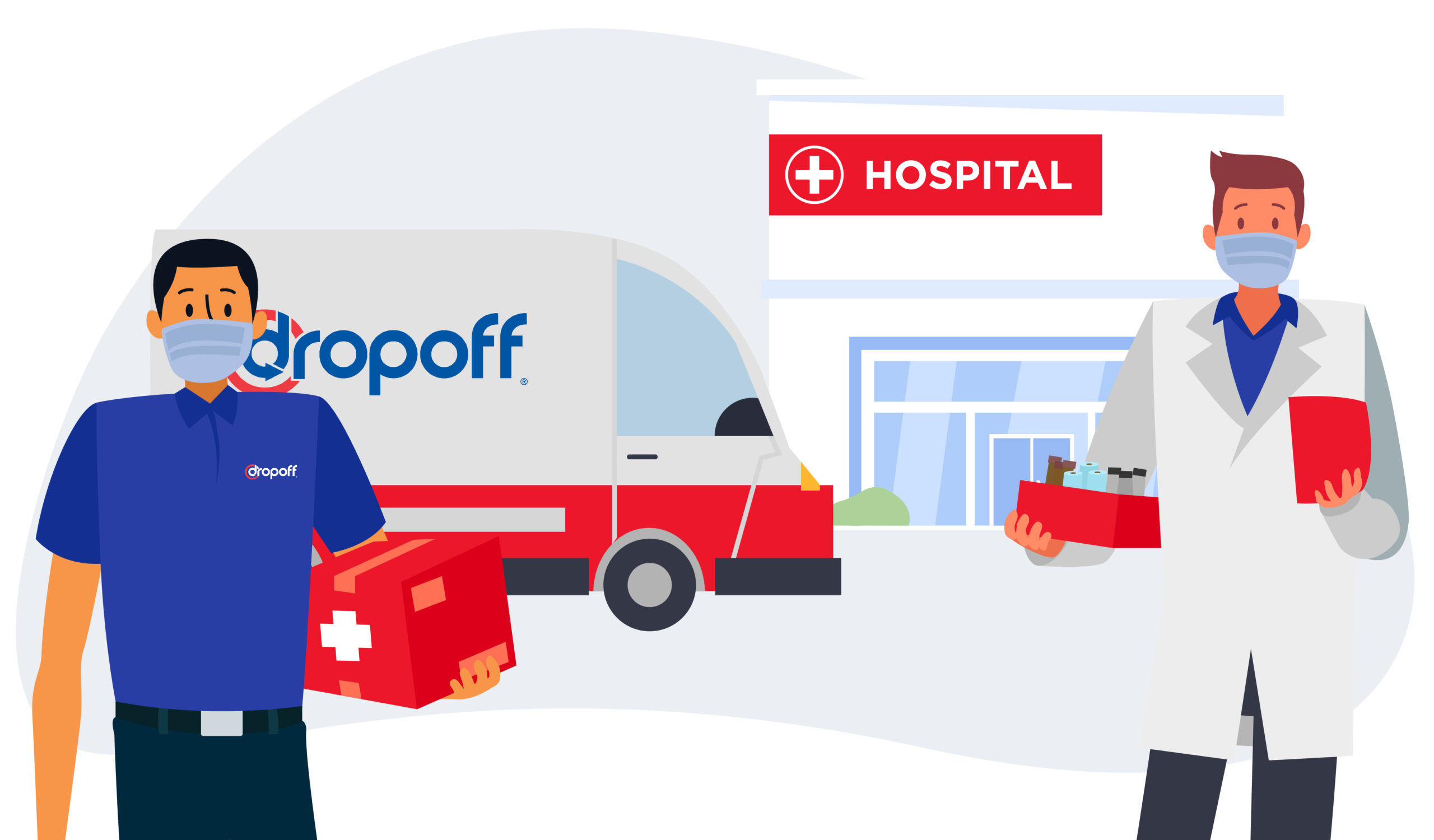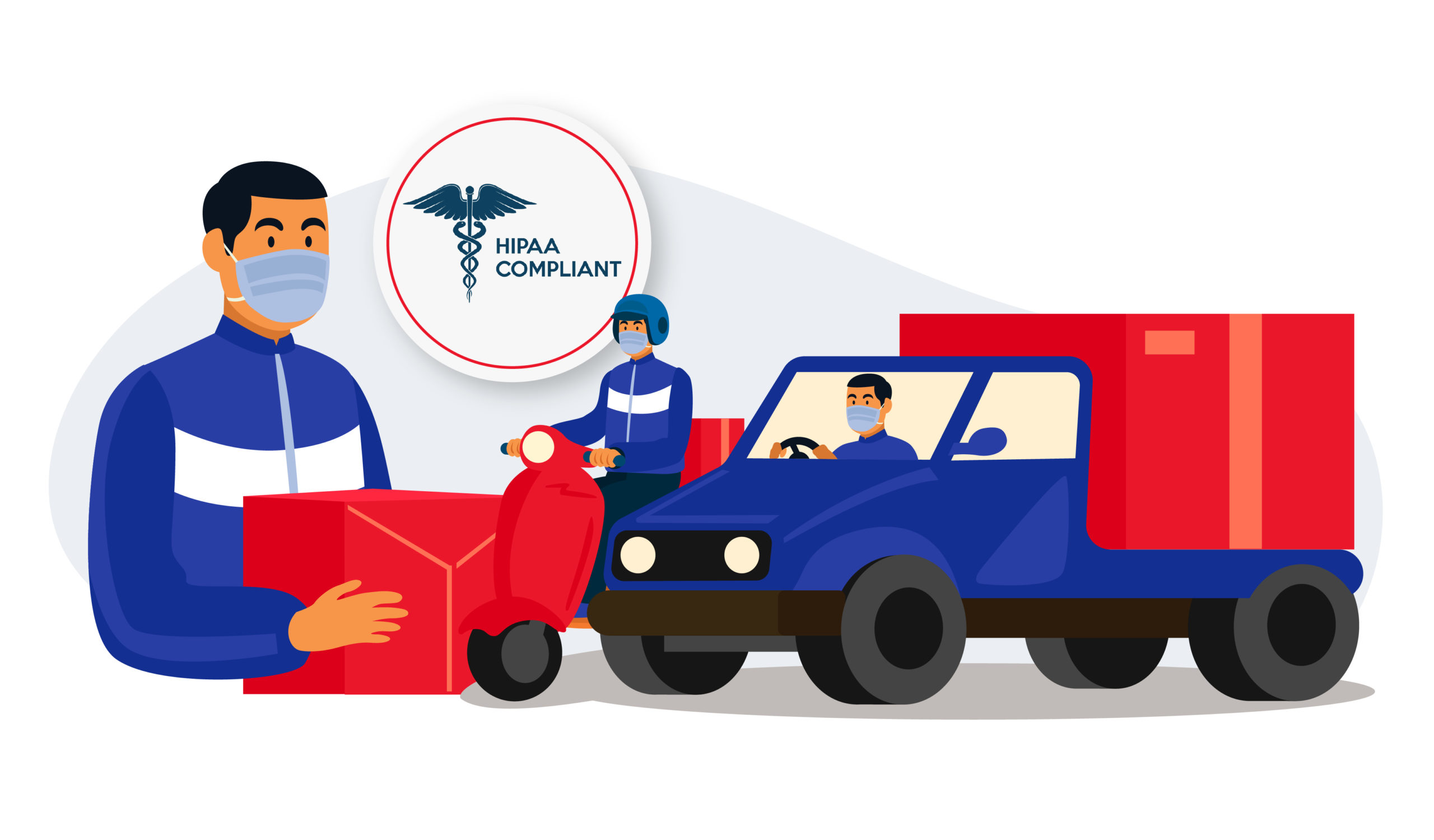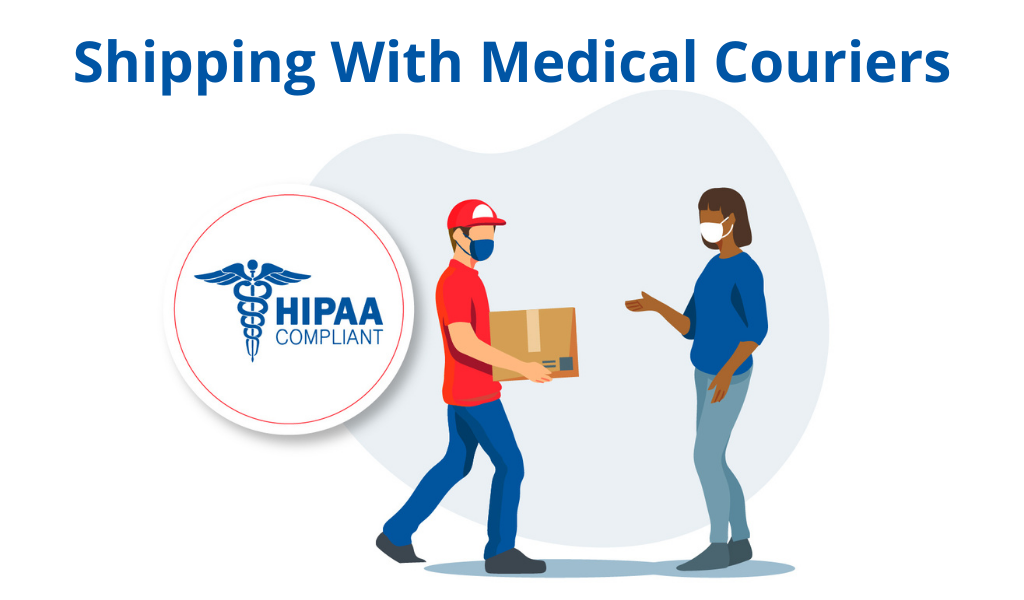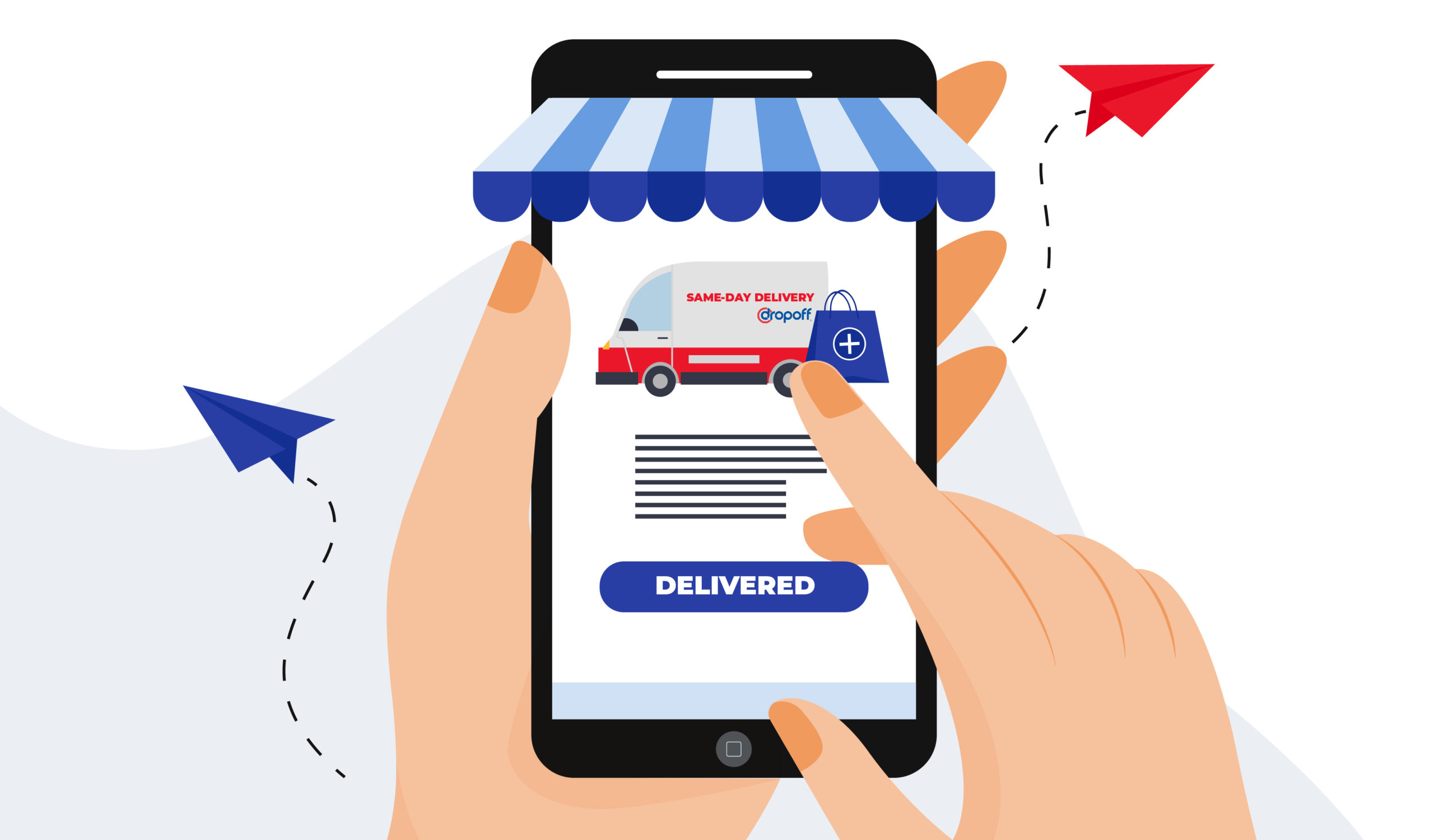Ultimate Guide to Cold Chain Logistics In Healthcare
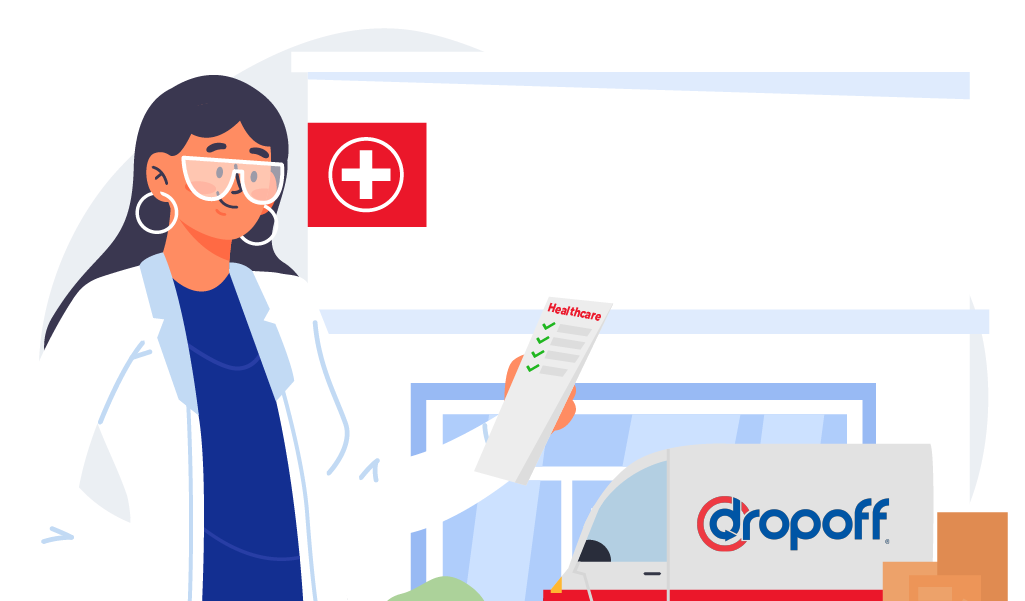
Transporting temperature-sensitive goods means you need to have a cold chain logistics plan in place. In this blog post, we’ll help you navigate through cold chain logistics by giving you all there is to know.
What Is Cold Chain Logistics?
Cold chain logistics is a process that keeps temperature-sensitive goods safe during transportation. It uses technology & medical science to understand how temperature affects certain products and their effectiveness.
Why Is Cold Chain Logistics Important?
Some products can handle temperature changes, but others can’t. If a product spends too long in a hot truck, it won’t be safe for consumption anymore. For instance, customers probably can’t tell that the salmon they just ate was stored in a hot truck until they start feeling sick.
The risk is bigger when it comes to medication.
Most of them need to be kept cool, like vaccines, antibiotics, and blood products. If they’re not kept at the right temperature, they won’t work as intended. That’s where cold chain vaccine transportation comes in. It protects products using temperature-controlled environments.
The Healthcare Distribution Management Association says that 10% of all medications are temperature sensitive, and that number will only increase over time.
The Challenges of Cold Chain Logistics
These are the most common issues that come up with cold chain logistics:
- Incorrect Packaging – If a product is packaged wrong, it’ll risk contamination.
- Transportation Delays – Delays have a big impact on items that need to be delivered on time; they don’t remain fresh.
- Missing Records – Everyone involved in transportation is responsible for recording temperature statistics and other data. If this data isn’t tracked appropriately it can lead to the wrong actions being taken.
- Temperature Control Issues – Extreme weather conditions will affect deliveries, leading to broken cooling systems or too much outside air entering the system.
- Regulations and Requirements – Most cold chain transportation companies invest in advanced technology to offer visibility. This helps them comply with strict regulations.
Main Benefits of Cold Chain Transportation
The following are the main benefits of cold chain logistics:
- Reduces wastage
- Improves product quality
- Increases revenue and profitability
- Extends the shelf life of perishable goods
- Reduces the spread of disease
The Pharmaceutical Cold Chain Logistics
The demand for cold chain logistics services in the healthcare industry has skyrocketed over the last few years. The 2020 Biopharma Cold Chain Sourcebook predicts that this market will be worth $21.3 billion by 2024.
Everyone in the cold pharmaceutical chain is responsible for keeping the items in a temperature-controlled environment – not just the medical couriers. This includes pharmaceutical manufacturers, pharmacies, doctors, and hospitals. If you don’t store products correctly, it becomes a public health hazard.
Some biopharmaceuticals, like blood or plasma, need to be stored between 2° and 8°C. Others are stored at temperatures as low as -40°C to -45°C.
How the Cold Chain Operation Works
You need a solid cold chain process to make sure your deliveries are running smoothly. This process happens in a few steps: preparing the shipments, sending them out, and checking that they arrived safely at the end.
1. Preparing Shipment
When delivering a temperature-sensitive product, you need to look at its characteristics – one of them is its temperature requirement. You must also figure out how to pack and ship the product. Granted, cold chain devices are great at managing temperatures, but the products need good preparation first.
Other things to worry about include where the shipment is going and the weather conditions there. You need a container to keep the temperature regulated if it’s a cold place. If it’s hot, you need a container for hot weather. Also, don’t forget to make sure the load unit is sterile.
2. Mode of Transportation
As you can tell by now, many things affect your deliveries. The distance between the initial and the final destination, the size and weight of the shipment, and the temperature it needs to be. It all plays a role.
You can use a van or truck if it’s a short distance. But an airplane or container ship is more appropriate if it’s a longer trip.
3. Customs Procedures
If the product has to cross borders, it’s important to follow customs procedures. Cold chain products are often time-sensitive and more prone to inspections than regular freight. This part is a bit difficult as each country’s customs regulations differ. If there’s one thing to note, expect sanitary inspections such as fumigation.
4. Reaching the Last Mile
And finally, we reach the last mile. This refers to the shipment arriving at its final destination. To make sure everything goes smoothly, make sure that the cold chain transport vehicle meets all the specifications necessary.
You should also worry about how the product will transfer from the vehicle into the cold storage facilities. There’s always a risk that something happens during this final transfer, so don’t wait to take precautions.
5. Integrity of Products
When the shipment reaches its final destination, record the temperature and any problems. This creates trust and accountability. Because if something happens to the shipment, records make it easier to find out what went wrong. The cargo can be very expensive when you’re shipping pharmaceuticals.
The Components of an Efficient Cold Chain Logistics Process
The cold chain has three core components that rely on cooling technology, including:
- Product – The products need to be kept at a certain temperature, and the cooling systems ensure that.
- Initial and Final Destination – The place where the product starts and finishes is important to think about in the cold chain. The longer the distance, the harder it is to keep a regulated temperature.
- Arrival and Distribution – Refrigerated shipping containers help products stay cold during the journey. Eventually, they’ll be stored close to the destination market for distribution.
Cold Chain Equipment and Packaging
The most common cold chain transport vehicles are reefer trailers, containers, and specialized vessels. In addition, many warehouses and distribution centers have large walk-in coolers and refrigerators.
There are two types of cold chain transportation coolers:
- Passive cold containers use dry ice, gel packs, gel bottles, liquid nitrogen, eutectic plates, quilts, and other materials to maintain a low internal temperature.
- Active cool containers control their internal temperature levels through sensors, a control unit, and ventilators that adjust the temperature automatically to keep it stable.
Both cooling products are reusable, take up little space, require less handling, don’t need cooling material replaced, and provide better-guaranteed temperature control.
Learn more about the healthcare logistics industry!
Cold Chain Regulations in the Healthcare Industry
Government institutions set regulations to make sure that cold chains are safe. These regulations involve the temperature, how long to store a product, how to package a product, and more.
Here are a few of the main cold chain regulators in the healthcare space:
- The US Food and Drug Administration sets standards covering everything from how food is made to how it’s stored and delivered.
- The Good Distribution Practice (GDP) is a main set of standards that all distributors of medicinal products must comply with within Europe.
- The World Health Organization (WHO) created guidelines regulating the packaging and shipping of vaccines to keep them cold.
- The International Air Transport Organization (IATA) released guidelines on shipping sensitive products.
Additionally, the IATA’s Temperature Control Regulations (TCR) set the standard for how to ship pharmaceuticals safely. This regulation requires special Time and Temperature Sensitive Labels.
Also worth mentioning is the Global Cold Chain Alliance (GCCA). The GCCA is a group of 1,100 cold-chain logistics service providers from 85 countries. Its mission is to build a safe and strong cold chain industry. They work to develop best practices, give advice to governments and organizations, and serve as a voice for the industry.
Cold Chain Technologies
Below are some handy cold chain technologies.
1. Dry Ice
Dry ice doesn’t melt – it turns into a gas. It keeps shipments frozen for a long time because its temperature reaches -80° C.
2. Gel Packs
Most pharmaceuticals must be stored at a temperature between 2 and 8°C. Using packs that contain substances that change phases (from solid to liquid and vice versa) to control the environment is very useful. Depending on the shipping requirements, these packs start in a frozen state. As they travel, they melt into liquids and maintain a stable internal temperature.
3. Eutectic Plates
Also known as cold plates that use a liquid to maintain a cold temperature. They’re reusable and have lots of different applications.
4. Liquid Nitrogen
A hazardous substance that’s very cold, about -196° C, used to freeze packages for a long time.
5. Quilts
These are well-insulated pieces placed over or around the products to keep the temperature stable.
6. Reefers
There are different types of temperature-controlled transport units. The most common unit is the forty-foot ISO container, also known as a reefer.
Tracking
For tracking purposes, you can take advantage of these technologies:
- GPS / Global Positioning System
- GSM / Global System for Mobile Communication
- RFID / Radio-Frequency Identification
- BLE / Bluetooth Low Energy
When transporting cargo by truck, use a telematics solution that GSM/GPS powers to track the truck’s position in real time. The location data is usually sent to the carrier’s transportation management system. Also, most carriers give their customers access to tracking information through customer portals or even a link to a third-party tracking service provider.
Monitoring
These are some devices to monitor temperature, humidity, and sometimes even vibration in cold chain logistics.
- Data loggers are great at monitoring conditions. These devices are placed inside the container (or storage area) to measure temperature and humidity. They keep records of storage conditions for data collection later on.
- Bluetooth temperature sensors are more advanced because they measure temperature and location data. They also transmit records wirelessly when scanned with a reader or a smartphone.
Integration of Tracking and Monitoring Solutions
If you only have a few shipments in your cold chain, track them through a customer portal provided by the carrier. But if you have multiple shipments that you regularly send, it’s more convenient to track using a different method.
You should install your own GPS tracking devices or design an entire Integration of Tracking (IoT) infrastructure to monitor all important metrics. But if you rely on the carrier to handle these, try building an integration between your systems. It’ll take effort, time, and investment, but it’s worth it because you’ll save more time in the long run.
How Dropoff Can Help with Cold Chain Logistics
At Dropoff, we understand the unique transportation challenges that healthcare companies face. We have extensive experience transporting medical items nationwide, and we’re happy to assist your organization with similar challenges.
Our dedicated professionals will work closely with you to ensure that your medical items arrive safely, on time, and in compliance with all regulations.
Talk with a Dropoff expert, and we’ll build a custom logistics solution for you.
FAQs on Cold Chain Logistics
1. What is cold chain transportation?
Cold chain transportation is a technology and process that keeps temperature-sensitive goods safe during transportation. It uses science to understand how temperature affects certain products and their effectiveness.
2. How to maintain a cold chain during transport?
To maintain a cold chain during transport, it is important to fill up at least 50% of the storage space at all times. This will allow for enough cold air circulation and help keep the refrigerator temperature stable.


